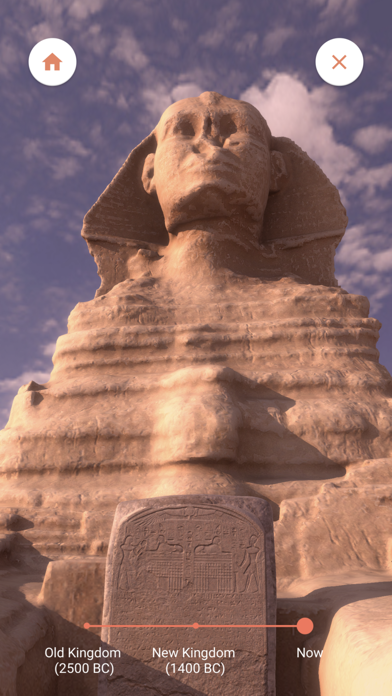
The Great Sphinx at Giza dates to the reign of King Khafre, of Dynasty 4, about 2576–2551 BCE. In between its front legs stands a royal granite stela inscribed in hieroglyphs that dates to more than 1,000 years later (Dynasty 18, about 1401 to 1391 BCE).
At the top of the decorated stela, beneath the mirror image figures of Thutmose IV pouring ritual drink and offering incense to the Sphinx, the story contained in the many horizontal lines of hieroglyphs is a romantic piece of royal propaganda. The young Prince Thutmose falls asleep in the shadow of the Sphinx’s head, which means that the rest of the body must have been buried under the sand in his day. The Sphinx, in the form of the sun god, then appears to him in a dream, right when the sun was at its highest point, emphasizing the solar connection. The Sphinx offers Thutmose the throne if he will only clear all the sand covering its body. After these events took place, Thutmose ordered his craftsmen to carve the stela—from one of the granite blocks from Khafre’s pyramid temple—and set it up between the Sphinx’s front legs. The text tells us this happened in his first year as king, but this too may be propaganda. The story presents Thutmose’s “divine right” to the throne as the legitimate pharaoh of Egypt.
This augmented reality app recreates the context of the Dream Stela and the Sphinx at different points in time and allows the visitor to stand virtually in front of the text, between the legs of the Sphinx itself. It also provides information about Thutmose IV and this stela, the Sphinx, and the great archaeological site of the Giza Pyramids.



